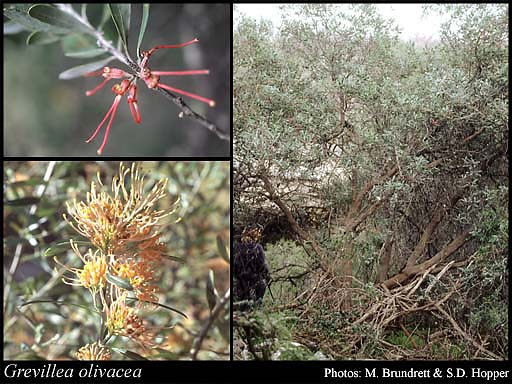- Reference
- Nuytsia 1:373 (1974)
- Conservation Code
- Priority Four
- Naturalised Status
- Native to Western Australia
- Name Status
- Current
Erect, non-lignotuberous shrub, 1-4.5 m high. Fl. red/red-pink, Jun to Sep. White or grey sand. Coastal dunes, limestone rocks.

Scientific Description
Shrubs, 3-4 m high; branchlets hairy, not glaucous. Leaves alternate, 30-75 mm long, 3-20 mm wide, hairy or glabrous, on the adaxial or abaxial surface, the hairs straight; lamina flat, clearly widest above the middle, entire, the margins flat or recurved, exposing the lower surface of the leaf blade. Inflorescences axillary or terminal, yellow, orange or red; pedicels 4-5 mm long. Perianth 7-10 mm long; tepals some joined and some free after flower opens, hairy, simple-hairy; ovary glabrous, stipitate, the stipe 3-5 mm long; pistil 22-28 mm long, yellow or red, pollen presenter oblique, style glabrous. Follicles glabrous, not viscid, dehiscent, 11-15 mm long. Flowers in June, July, August, September or October. Occurs in the South-west (SW) Botanical Province(s), in the Geraldton Sandplains (GS) or Swan Coastal Plain (SWA) IBRA subregion(s). : Conservation code Priority Four (P4).
Distribution
- IBRA Regions
- Geraldton Sandplains, Swan Coastal Plain.
- IBRA Subregions
- Dandaragan Plateau, Geraldton Hills, Lesueur Sandplain, Perth.
- IMCRA Regions
- Central West Coast.
- Local Government Areas (LGAs)
- Carnamah, Cockburn, Coorow, Dandaragan, Greater Geraldton, Irwin.